An easy, gluten free vegan French bread recipe using the water from chickpea cans (aquafaba) as egg replacers. Crusty on the outside and soft in the middle!
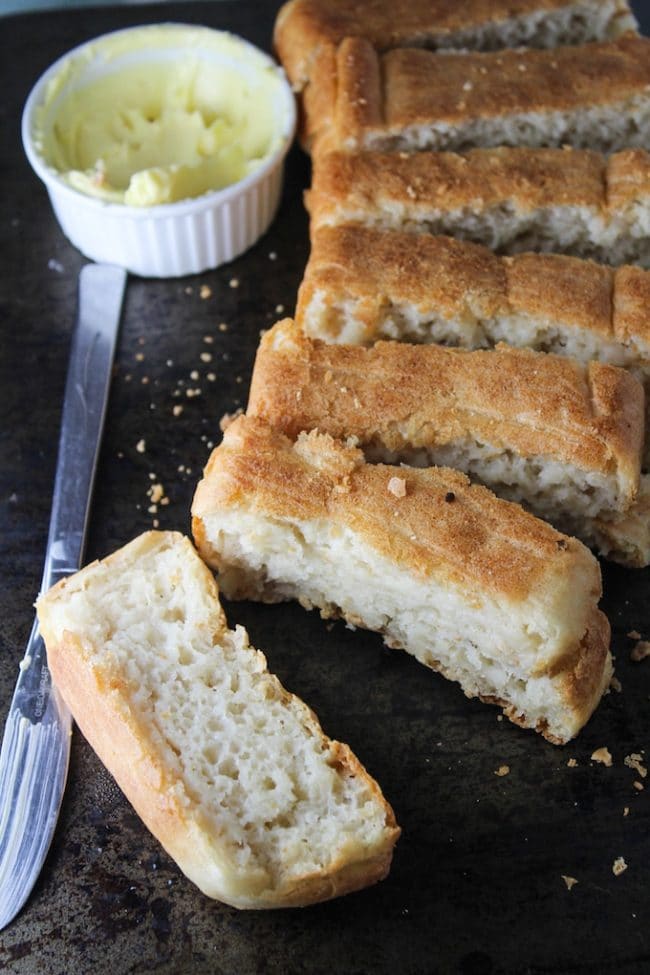
I’m pretty excited about this post today because it’s been a long time coming!
Easily my most popular recipe that I’ve ever shared on A Saucy Kitchen has been for my gluten free French bread recipe. It’s easy, it doesn’t require 50 different types of obscure gluten free flours, and above all it’s just really good!
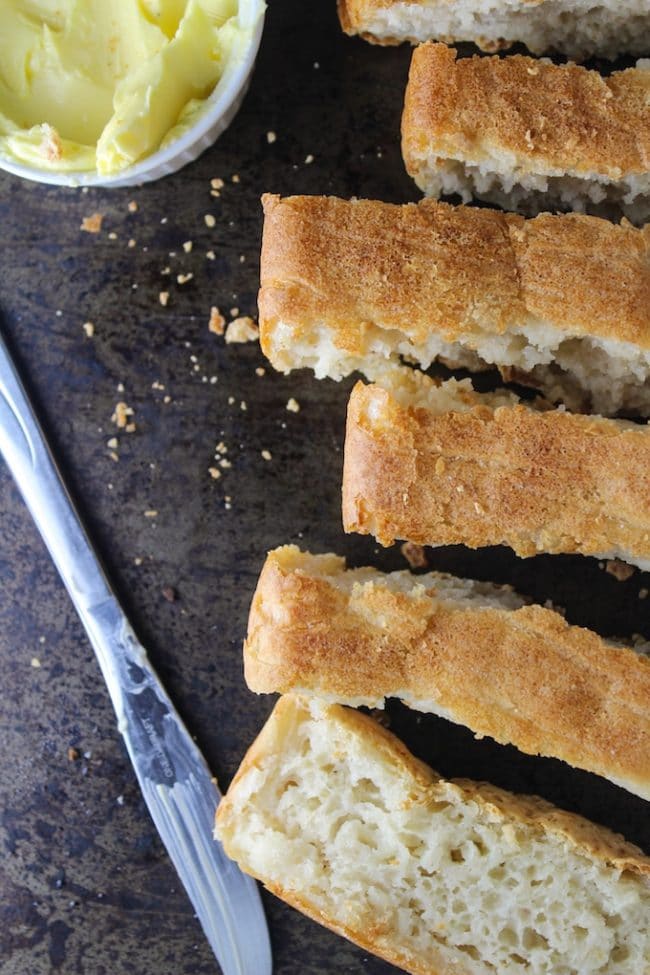
What is Aquafaba?
Aquafaba literally means bean water – as in the water that you and I used to pour down the sink when draining a can of chickpeas. As it turns out, this weird bean liquid makes for a fantastic vegan egg substitute.
As a rule of thumb 3 tablespoons of aquafaba is equal to 1 whole egg. However, this can depend on what you’re cooking and the consistency of the water. Ideally you want the water to be thick and a bit slimy – basically like real egg whites. Since the original recipe calls for egg white specifically this is perfect for our recipe!
Gluten Free Vegan French Bread
Just like the original Gluten Free Bread recipe the dough will look pretty wet and unusual compared to regular gluten filled doughs. You will have to spoon the dough into your bread pans so don’t be alarmed that you did something wrong.
Make sure that your yeast is still good before adding it to the dough. If the sugar-water and yeast mixture doesn’t foam that means that either your water wasn’t warm enough or the yeast is off. Best practice for storing yeast is to keep it in a cool, dark place like the fridge.
This bread is best on the first day, but you can keep it 2-3 days covered.
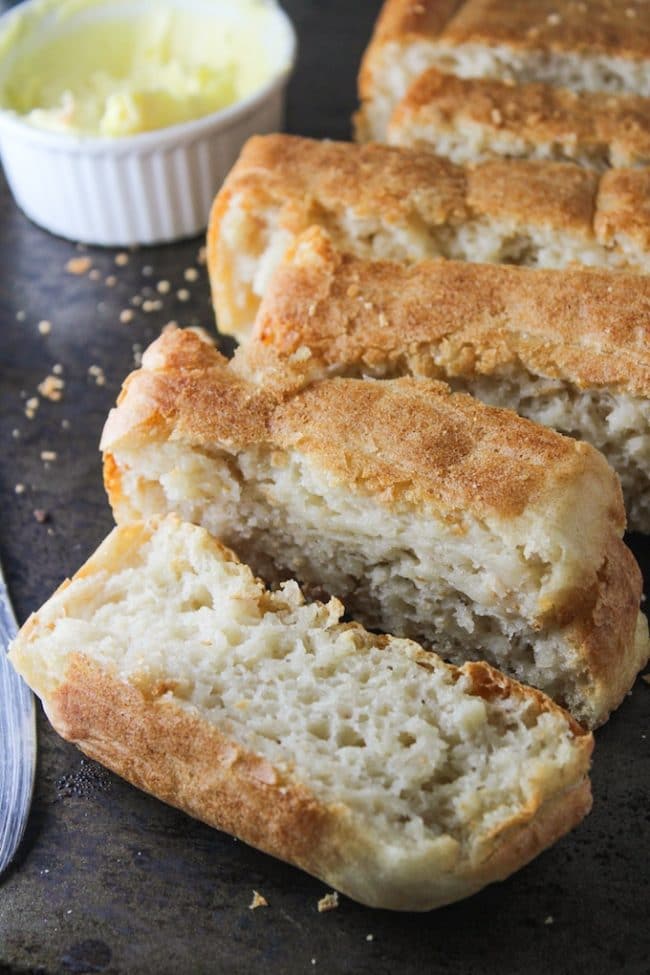
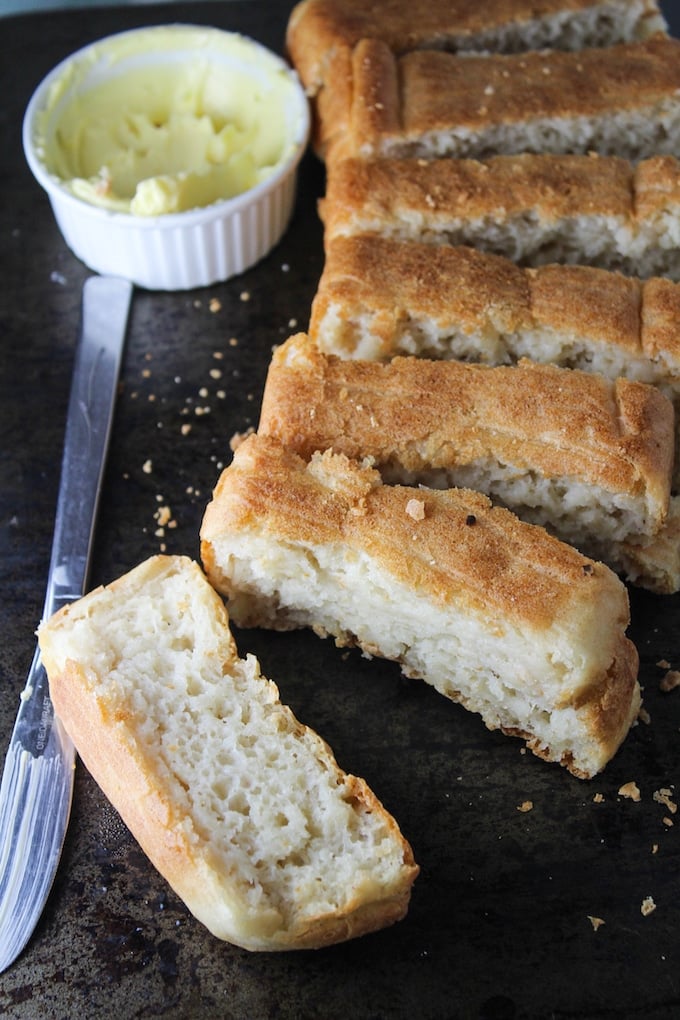
Gluten Free Vegan French Bread
An easy, gluten free vegan French bread recipe using the water from chickpea cans as egg replacers. Crusty on the outside and soft in the middle!
Ingredients
- 2 cups | 320 grams rice flour*
- 1 cup | 110 grams tapioca flour
- 1 tablespoon psyllium husk or xanthan gum
- 1 teaspoon salt
- 11/2 cup |360 ml lukewarm water between 105-110 degrees F
- 2 tablespoons quick rise yeast
- 2 tablespoons sugar or any kind
- 2 tablespoons | 30 ml olive oil
- 5 tablespoons | 75 ml aquafaba
- 1 teaspoon | 5 ml apple cider vinegar (you can substitute for another vinegar if you don't have ACV
Instructions
- In a large bowl, stir together your flours, psyllium husk, and salt.
- In a small bowl mix your hot water and sugar together and stir until the sugar dissolves. Make sure that your water is warm enough for this step so that your yeast proofs and the bread rises. Once the sugar dissolves, gently stir in your yeast. Set aside and let the yeast foam up for a few minutes.
- In another small bowl add the aquafaba, oil, and vinegar and whisk until you get a slight foam.
- Pour the yeast mixture into the flour mixture and mix with an electric mixer. Once the two mixtures are fully incorporated, add the aquafaba mixture and continue mixing for another couple of minutes.
- Grease or line two loaf tins or one french bread pan and spoon your batter into each tin.
- Cover and stash in a warm place for at least 30 minutes. Since our kitchen is usually freezing, I like to stow my dough in the microwave for the rising process which keeps the dough free from drafts.
- After your dough has risen (about 30 minutes) preheat your oven to 400F/ 200C. Bake for 40 minutes. Rotate the bread after about 20 minutes in the oven to ensure the bread cooks and colors evenly.
- Remove from the pan and cool on a wire rack and then enjoy!
Notes
This is best enjoyed fresh - as is the case with most homemade gluten free breads this can become chewy over time
Nutrition Information
Serving Size:
slice Calories: 124Sodium: 168mgCarbohydrates: 24gFiber: 1gSugar: 1gProtein: 1gHave you made anything else with aquafaba? I’d love to know your own experience working with it!
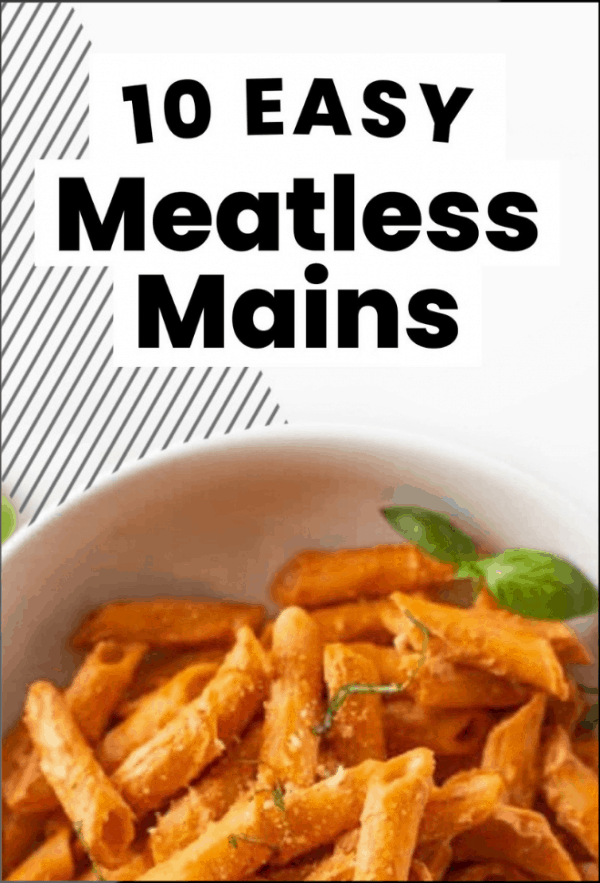

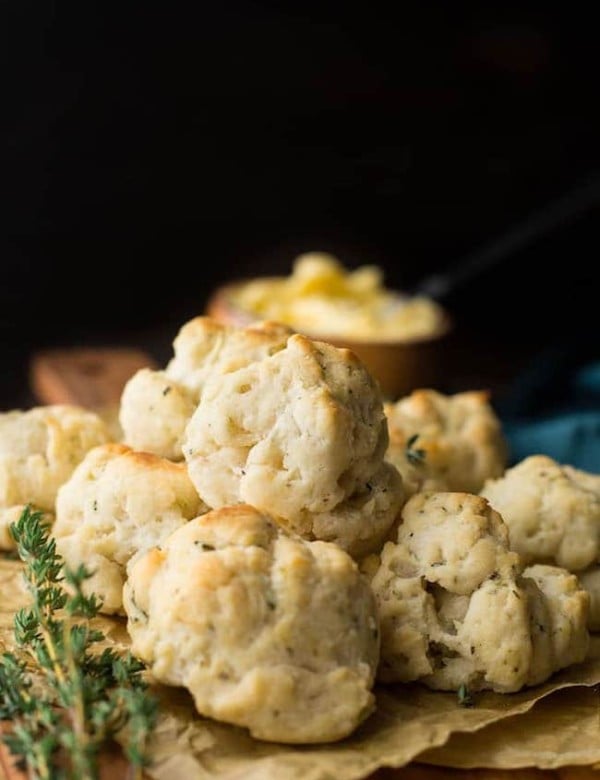
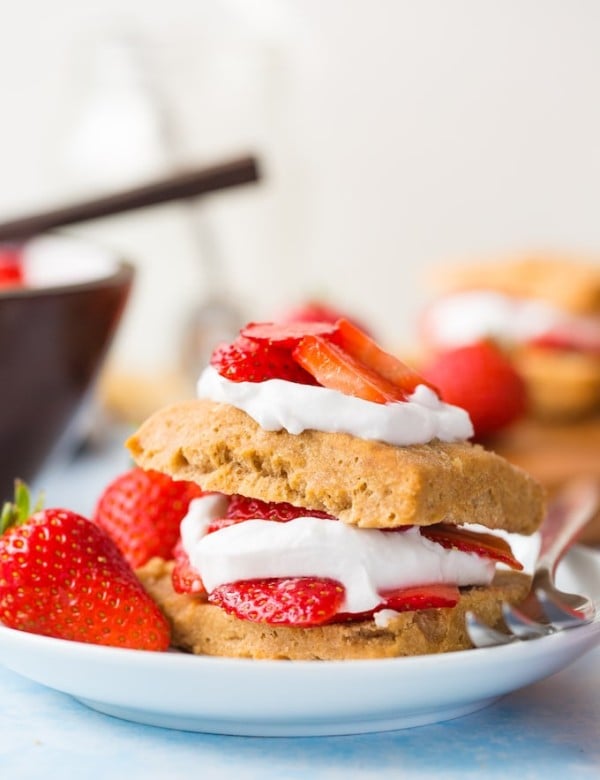
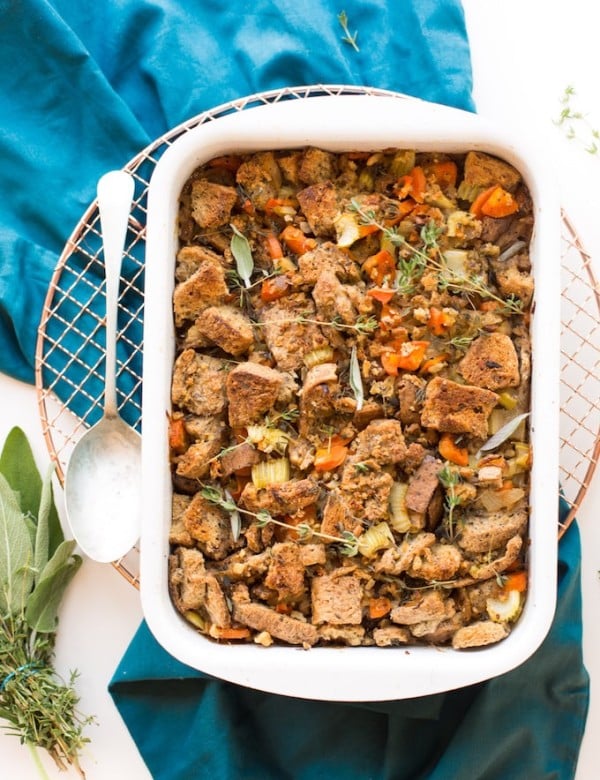
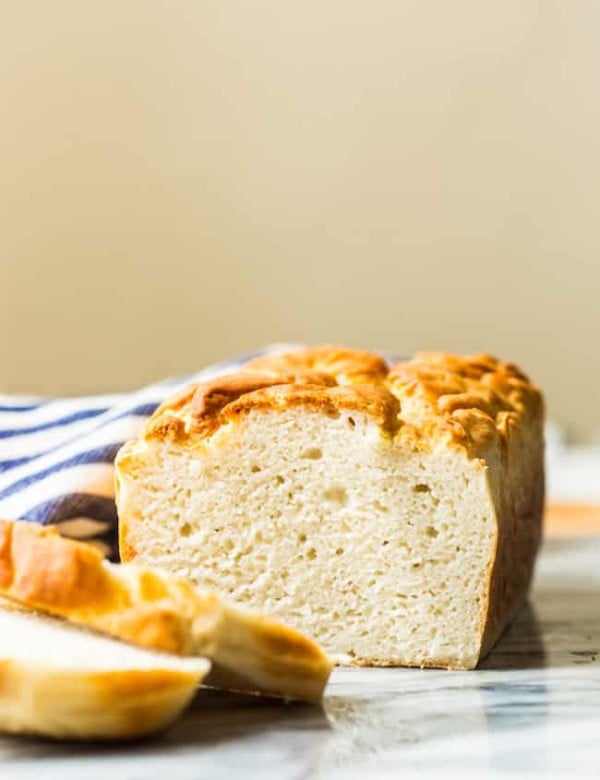
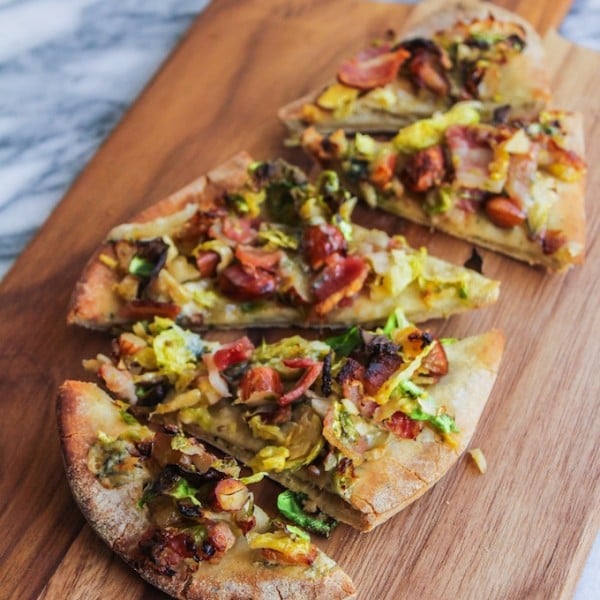
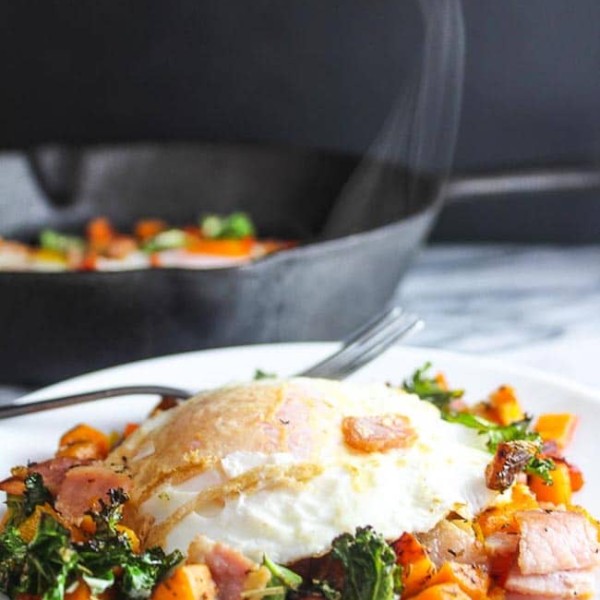
Diane says
Learning to cook all over again and tried this vegan French bread tonight. It was a total hit! Even without the right pan, it was soft and crusty and delicious. Take a bow. Take another bow.
Can’t wait to try the other recipes, but bread hunger was not to wait another day.
Done with psyllium husk, aquafaba, tapioca and rice flours. What a great surprise! Thanks!
Sarah says
Yay! I’m so glad to hear that! Thanks so much for coming back to let me know what you thought!
Donna says
I loved the original recipe. How many eggs did I need for the original? I was getting ready to make this and the recipe has changed!
Sarah says
Hi Donna! The recipe didn’t change – this is just a different one. The original one is right here: https://www.asaucykitchen.com/easy-gluten-free-french-bread/ Glad you like it!
Ximena says
First of all: Wow! What an awesome discovery your recipe has been! Hands down the best gluten free bread I ever had. I didn’t know aquafaba and loved it as an egg substitute.
Also, since I like a lot of fiber in my bread, I went for a little experiment to make ot more “whole grainy”. To your recipe I added
– 1 cup flax meal
– 1 cup mixed seeds (I used sunflower, sesame, flax and pumpkin)
– 1 additional tbsp of yeast
It turned out fabulous, I can only recommend it.
Thank you so much!
Sarah Nevins says
LOVE those additions! Definitely trying your whole grain version the next time I make this – thanks Ximena!
Kathryn says
First off: Thank you!!
Secondly: SO GOOD! Best gluten free bread have had/made/eaten ever. So pleased! This is going to become a staple in my house 100%
I imagine it would also make an AMAZING base for a garlic bread.
YUM!
Sarah says
That makes me so happy to hear! Thank you so much for coming back to let me know what you thought – totally makes my day!
Titia says
The first gluten free French bread recipe I’ve tried that is like claimed: soft in side and a nice crust!
And the first one ever tried with aquafaba.
The only problem was to turn the bread halfway, it sticked terribly to the pan, I think I’ll dust the pan the next time, or use parchment paper..
As with the normal French bread: don’t wait to long eating it. I baked it for diner, and this morning with breakfast it had become chewy. Although the taste was still good.
Definitely will make it again! . I think we’ll eat more chickpeas in the future 🙂
Sarah says
I’m glad you liked it! Good point on eating this fresh – wait too long and it doesn’t do this any justice. Thanks for coming back to leave a comment/review!
Deb says
I’ve tried to make gluten free french bread several times (not by this recipe) but every attempt fell.
Any tips on keepiing my loaves from falling when I take them out of the oven?
Sarah says
Hi Deb! I’ve looked up that issue in the past when I had issues with bread falling. One thing that popped up over and over again in a lot of baking forums was people saying that it’s possible the dough was over proofed. If the dough is left to rise too long or the conditions are too warm it will cause the bread to rise nice and high only to deflate after baking/when you cut into it. In most cases people were discussing recipes with gluten in it, but I’ve found that this can sometimes happen in gluten free recipes as well. I like to let my dough rise in the microwave (not on) because it’s out of the way in a controlled environment/temperature.
Another thing you could try is to cook the bread at a lower temperature for a longer time. I’m not exactly sure why that works with gluten free bread, but I know it does.
Hope that helps!
Kay Horn says
Hi Sarah
Have you tried making a cassava flour loaf?
I’d love to hear about it if you have esp using aquafaba.
My family are all on an AIP so diet is tough!
Thank you
Kay
Sarah says
Hi Kay! I haven’t been able to play around too much with cassava flour because I have a hard time getting it here in the UK, but you might be interested in checking out Heather’s blog http://cookituppaleo.com/ She does a lot with cassava and even has quite a few AIP recipes.
If you are interested in experimenting with aquafaba the main rule of the thumb I go by is that 3 tablespoons aqaufaba = about 1 egg. From my limited understanding of cassava flour – it’s supposed to be pretty similar to wheat flour so I would think it would work with aquafaba in some cases. Hope that helps!
sassygirl says
baked this bread yesterday and although
hesitant about its liquidy state, continued
to the end and allowed it to cool overnight.
i baked it in a lukue bread baker (silicon)
which could have helped it turn out amazing.
brown crisp crust and soft crater like
interior…just as a french boule should have.
toasted it this morning and it was delicious!
thanks for a permanent vegan gf bread recipe…
probably the best ever!
🙂
Sarah says
So glad you liked it! I had the same doubts the first time I ever made the original recipe that this is based off off – it just felt so wrong! Thanks for coming back to leave a note telling me how it went! 🙂
marlene lucy says
Hi Sarah,
This will be my first attempt using Aquafaba for bread. However I use it for mayo, muffins, fish and chicken batters, pancakes and cakes with great results. I love the stuff. I’ve told everyone who listens about it and have been told they to use it. Thank you for your posts.This too I’ve emailed to friends and family.
Sarah says
I always forget that you can use aquafaba to batter things! I’m going to try that one out soon – it’s good to know because I occasionally get asked about egg free batter substitutes. Thanks for reminding me!
I hope you like the bread as much as we do! Every time I make it it disappears within a day 🙂
Robin Schapiro says
Hi! I just made this recipe yestetday… I am so close! The crust is perfect and it tadtes great but the middle remains doughyish. Do you think it’s a yeast issue? I yried to different batches, the first one was clearly dead and the s3cond one only had a couple of bubbles. Obviously I am not an exerienced bread maker 🙂 Thanks. Excited to get this right and wow/surprise all my friends and family.
Sarah says
Hi Robin! It sounds to me like the oven temperature might be the problem here – at least that’s usually the case for me when things are cooked on the outside but not quite on the inside. Since ovens quite often vary in temperature it might be a case that your oven runs a little hotter than mine. I would try lowering the baking temperature by at least 10°F so that the outsides cook slower. Also – what’s the rack position that you’re baking on? Try moving it to a middle or lower rack so that the heat distributes as evenly as possible. I hope this helps! Let me know if need anything else and I’ll try my best to help you figure it out!
Michelle | A Dish of Daily Life says
What else is aquafaba used for? Just baking? I am so intrigued. We go through a lot of beans here…I love that I could actually use that water! Your bread looks wonderful. We don’t have any special dietary restrictions here but when my youngest was very little, he was allergic to wheat, so we actually went completely gluten free to avoid any possible issues. We ate that way for 2 years, and discovered a lot of gluten free recipes that we loved, so I still make them. I’d love to try this!
Sarah says
I’ve started playing around with it more lately – so far I’ve just done baking. I’ve made donuts, cookies, and this bread. It’s also supposed to be perfect for making vegan meringue because it’s whips up like egg whites. That’s next on my list. Also I’ve seen it used in ice cream too – I’m not too sure what the purpose of it is in that, but I’m going to try it! It gives me an excuse to make more hummus to which is always a plus 😀